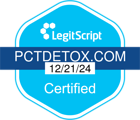People often think of hangovers as an annoying side effect that follows a night of drinking. Most simply take something for their headache, drink water, and disappear under a blanket for the day in order to deal with this self-inflicted illness.
Few realize that every substance results in a hangover: from marijuana to crack, after binging a substance the body goes through a miniature form of withdrawal in order to return to its homeostasis. Prolonged use however requires medical assistance in order to ensure the symptoms do not become life-threatening as well as a period of re-education so an individual may have time to adjust to life without the use of the substance they abused.
Cocaine occupies a unique position in the world of illicit substances. During the 1970s cocaine became popular with upper-class white people as a party drug. Its acceptance by the wealthy was bolstered by a Times article claiming that cocaine was non-addictive. Gradually though the addictive nature of cocaine became more apparent as the 80s progressed with the advent of crack-cocaine, a more concentrated version of powder cocaine. According to the National Institute of Drug Abuse, in 2011 cocaine was involved in roughly 40% of 1.3 million trips to the emergency room for drug abuse-related injuries and overdoses. From 2001-2014 cocaine overdoses accounted for 4,000-7,000 deaths with the rate of death from overdose increasing over the past few years.
Cocaine Withdrawal Timeline
The withdrawal symptoms from cocaine are similar to other stimulants: extreme fatigue, irritability, depression, increased appetite, psychosis, and extreme cravings. Because cocaine abuse is often related to those in jobs that require a lot of energy and human interaction, it is easy to see why it is difficult for cocaine users to curb their abuse of the drug on their own. The timeline for crack cocaine withdrawal is primarily made up of 3 stages.

Stage One: The Crash
The first stage is the crash. Commonly this sets in 24 hours after last use, with symptoms like extreme fatigue and increased appetite being very acute anywhere from 3 days to 2 weeks. Depending on the amount, duration, and potency (if one has been using cocaine, crack, or freebase) the more severe symptoms may arise. Those who use crack may experience pulmonary issues like shortness of breath and coughing up blood. As one could assume, cocaine being a stimulant may also cause cardiovascular issues like increased heart rate and blood pressure. The acute withdrawal effects of cocaine are not inherently life-threatening but symptoms left unchecked could lead to death. A common symptom of withdrawal across all substances is depression which increases one’s risk of suicide.
Stage Two: Signs of Cocaine Withdrawal
The second stage is withdrawal. This stage begins anywhere from 3 to 14 days after last use and may last 3 to 6 months. Symptoms such as intense cravings, anhedonia, difficulty concentrating, short term memory loss are most common. It is during this time when people are most likely to relapse due to the intense psychological nature of these symptoms. Inpatient treatment is recommended for cocaine abuse due to the high vulnerability experience during this stage. Post-Acute Withdrawal Symptoms (PAWS) for cocaine abuse include panic attacks, insomnia, and mood swings. The importance of seeking treatment for cocaine abuse is vital due to the need to form new neurological pathways to address these symptoms.
Stage Three: Extinction
The third stage is “extinction”. This stage is identifiable by the decrease in the frequency of withdrawal symptoms. Intense cravings during the extinction phase are either sporadic or related to a trigger such as a person they used with, a place associated with using, or a traumatic event. Coping skills such as being able to leave a dangerous situation and support systems are necessary for those seeking to recover from cocaine and crack use due to the drug’s social nature.

Like with all substances, detox is a crucial first step in quitting cocaine. In addition to receiving medical attention, detox serves as a comfortable space to help ease the mental burden of transitioning into recovery. Folks who use cocaine are often highly sociable and at a detox center will begin building a new community around them, a vital resource for anyone crossing over into a new sober life.
Pacific Crest Trail Detox offers a supportive and safe environment for people to begin their cocaine detox, give us a call today to find out more.





